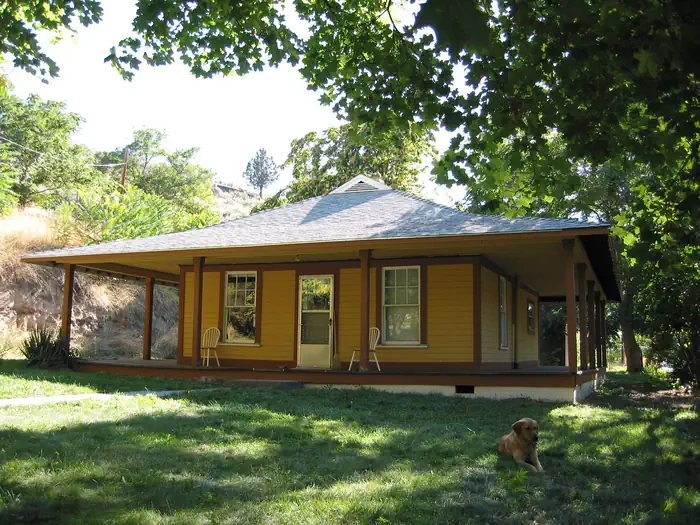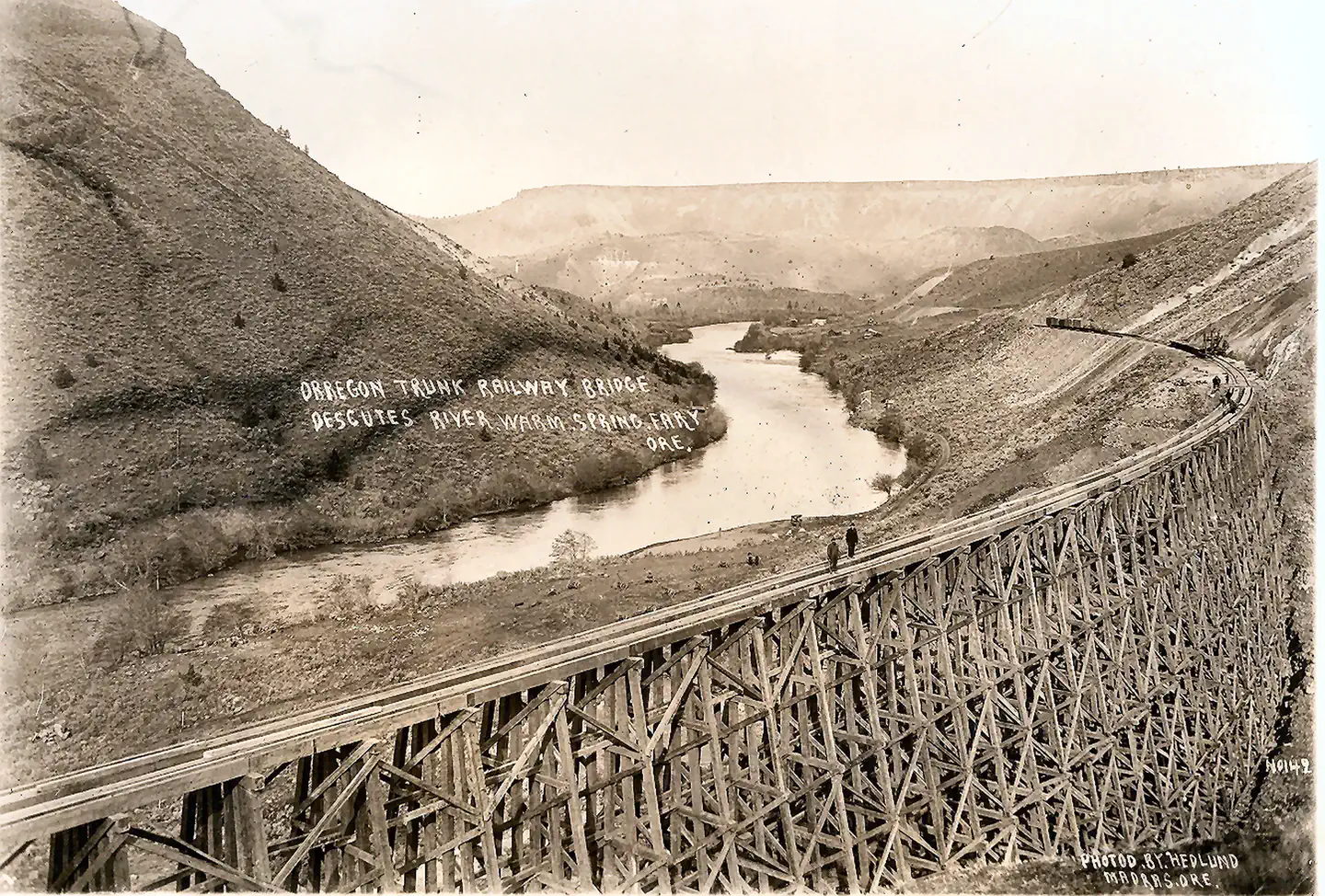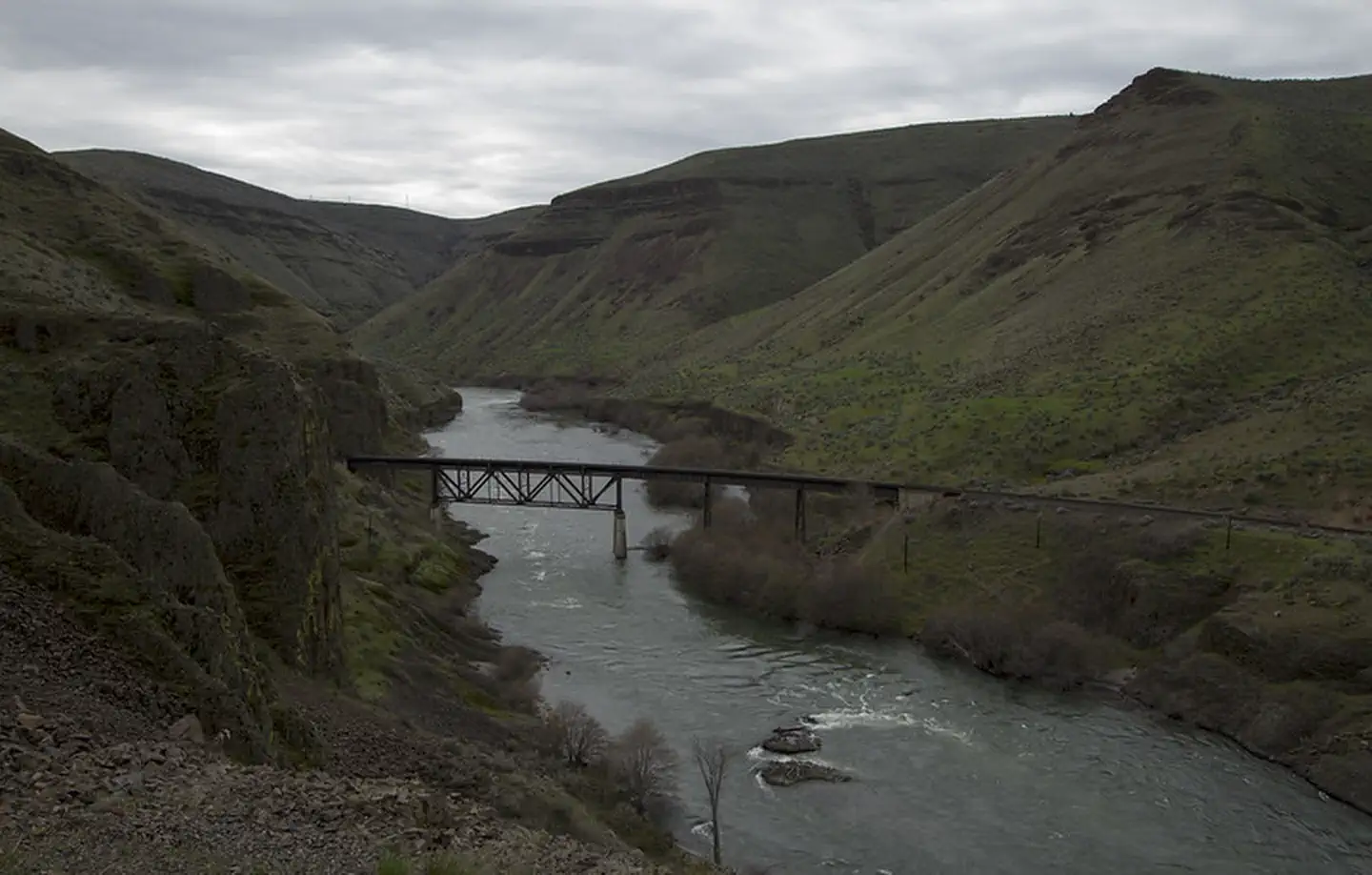Maupin Section Foreman House Historic Site
Lower Deschutes River Back Country Byway, Near Maupin, Oregon
Maupin Section Foreman House Historic Site does not offer reservations through Recreation.gov. Please take a look at the area details below for more information about visiting this location. Enjoy your visit!
Overview
The historic Maupin Section Foreman's House, known as the Depot House, is located 1/2 mile upriver from Maupin, Oregon on the east bank of the Lower Deschutes River. The house was constructed in 1910 by the Des Chutes Railroad Company, a subsidiary of the Union Pacific Railroad. It is a standard railroad design, commonly used at the time for housing in hot, arid climates. Designed with a wraparound porch, the Section Foreman could come home after a long day working in the hot temperatures of the canyon and relax under shade. On really hot nights, he could sleep outside as well. The property went into private ownership when the Des Chutes Railroad was abandoned in the I 930's. The BLM acquired the property in 1968. It was listed on the National Register of Historic Places on November 29, 2006, based on its association with railroad construction in the early I900's. The building was restored in the mid 2010s using the original Union Pacific color scheme.
Know Before You Go:
- The Maupin Section Foreman's House is unstaffed but visitors are welcome to visit the site.
- Visit other nearby BLM recreation sites along the adjacent 32-mile long Lower Deschutes River Back Country Byway


